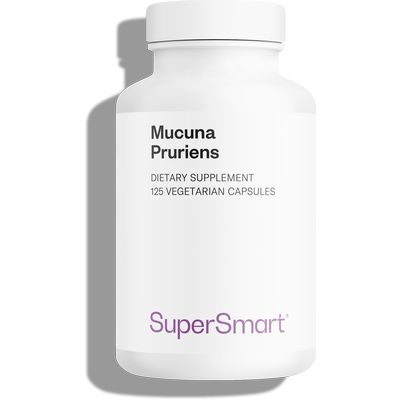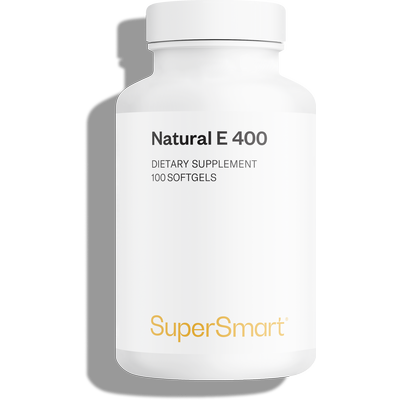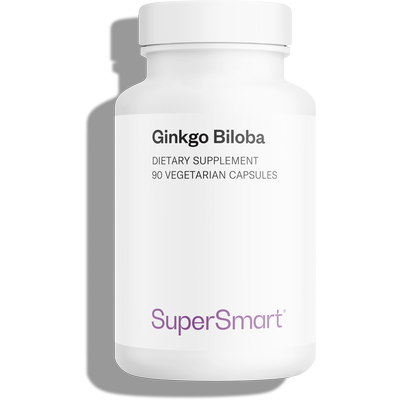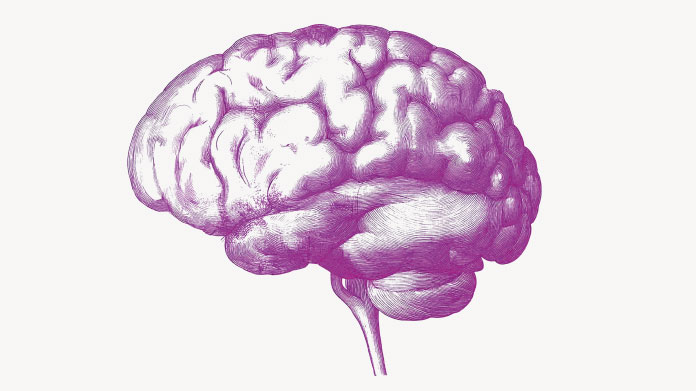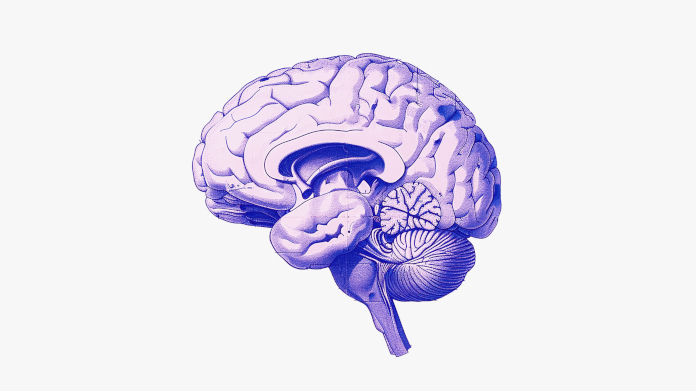Mucuna pruriens, offering new hope to those with Parkinson’s?
200 years after it was discovered, Parkinson’s disease remains, in many ways, a mystery. However, medicinal plants such as Mucuna pruriens are offering significant hope. Discover how this plant may benefit those suffering from this disease.

Parkinson’s disease: definition and causes
What is Parkinson’s disease?
Parkinson’s disease is a degenerative disease of the nervous system characterised by the slow, progressive death of neurons in a region of the brain called the substantia nigra.
Those affected normally suffer uncontrollable, jerky movements as the neurons concerned are located in an area of the brain that controls movement.
What causes Parkinson’s disease and its symptoms?
By the time the first symptoms occur (tremors, rigidity), 60%-80% of the neurons in the substantia nigra have already been destroyed.
As this is an area that produces dopamine, a chemical messenger essential for motor control, the death of these neurons leads to a general lack of dopamine, and an increase in two other messengers in the brain : acetylcholine and glutamate.
It is this growing imbalance which triggers symptoms which then worsen over time. The scientific community has unfortunately not yet identified precisely why these neurons die.
Are there effective treatments for Parkinson’s disease?
As yet, there are no drug or surgical treatments able to cure Parkinson’s disease.
We probably need to first understand what causes the disease before any miracle cure can be found.
Current treatments are thus aimed at alleviating the symptoms and at making some attempt to slow the progression of the disease.
Four main avenues are being explored:
- increasing dopamine levels by relying on a precursor: levodopa (L-DOPA), an organic compound that occurs naturally in the body, levels of which can be increased with the use of drugs. This is a standard treatment, but since it becomes less effective over time, doctors usually wait until symptoms are significant before recommending it;
- mimicking dopamine’s action by using dopamine-like molecules;
- preventing the body from destroying what little dopamine is circulating, particularly through the use of drugs called MAO-B inhibitors and levodopa (which is converted into dopamine) ;
- reducing the effects of acetylcholine, levels of which are excessive compared with dopamine.
Why is Mucuna pruriens
Mucuna pruriens has a high content of natural levodopa
It might seem somewhat paradoxical to refer to ‘therapeutic hope’ in relation to velvet bean (Mucuna pruriens), given its millennia-old history of use in Ayurvedic medicine for the relief of kampavata (ie, Parkinson’s disease).
But the fact is that science has not yet unravelled all the mysteries of this unusual plant, despite the numerous studies devoted to it. But one secret has been unlocked: its high content of natural levodopa.
Velvet bean is one of the few natural sources of this molecule, the synthetic form of which is the standard treatment for Parkinson’s. This unusual composition is obviously the n°1 reason why it is so highly-rated by those affected.
Having said that, taking velvet bean for Parkinson’s disease should always be medically-supervised.
A synergistic range of active molecules
In fact, several studies suggest that Mucuna pruriens is not simply a source of L-DOPA (1).
It is thought to contain other synergistic molecules able to optimise the effects of levodopa, such as DOPA decarboxylase inhibitors (which prevent L-DOPA from being broken down before it reaches the brain) and NADH (which may play a role in the production of chemical messengers essential for maintaining neuronal circuits).
As proof, some studies have highlighted neuronal effects from extracts of Mucuna pruriens that contain no L-DOPA (2). Recent research has identified ursolic acid (3), and chlorogenic acid (4), but much remains to be done to understand the role of each of velvet bean’s active molecules, their potential complementarity, and their actual effects on the disease.
Expectations are all the greater since treatments based on the use of isolated (synthetic) levodopa gradually lead to dyskinesia (abnormal involuntary movements), a long-term side-effect which might, however, be reduced by supplementation with Mucuna pruriens (5).
Mucuna pruriens supplements for nerve and brain health
Velvet bean supplements already available for the nervous system
If a diagnosis of Parkinson’s disease has been made, it’s advisable, as indicated above, to consult a health professional before considering any supplementation.
The potential effects of this Ayurvedic remedy on degenerative disease and its contraindications are still being studied and have yet to be confirmed.
On the other hand, in a non-disease context, Mucuna pruriens supplements have a role to play in maintaining the nervous system and supporting the immune system, especially if they are standardised in L-DOPA (such as the supplement Mucuna Pruriens). Their use must, however, be supervised by a health professional, especially in the case of polypharmacy.
Some additional advice for optimising the effects of Mucuna pruriens
Here are some tips for increasing its efficacy:
- remain active. Taking regular exercise helps to maintain mobility and coordination, strengthen the skeleton (important in the event of a fall) and prevent depression (a risk factor in the development of Parkinson’s disease);
- eat a diet high in fibre, and low in saturated fat and animal protein. This will increase the beneficial effect of levodopa;
- alternate with other neuroprotective supplements, such as Ginkgo Biloba, or vitamin E (try, for example, Natural E 400), known for helping to protect cells against oxidative stress which is involved in the onset of the disease.
SUPERSMART ADVICE
References
- Rai SN, Chaturvedi VK, Singh P, Singh BK, Singh MP. Mucuna pruriens in Parkinson's and in some other diseases: recent advancement and future prospective. 3 Biotech. 2020 Dec;10(12):522. doi: 10.1007/s13205-020-02532-7. Epub 2020 Nov 10. PMID: 33194526; PMCID: PMC7655893.
- Misra L, Wagner H. Extraction of bioactive principles from Mucuna pruriens seeds. Indian J Biochem Biophys. 2007 Feb;44(1):56-60. PMID: 17385342.
- Rai SN, Zahra W, Singh SS, Birla H, Keswani C, Dilnashin H, Rathore AS, Singh R, Singh RK, Singh SP. Anti-inflammatory activity of ursolic acid in MPTP-induced Parkinsonian mouse model. Neurotox Res. 2019;36(3):452–462.
- Singh SS, Rai SN, Birla H, Zahra W, Kumar G, Gedda MR, Tiwari N, Patnaik R, Singh RK, Singh SP. Effect of chlorogenic acid supplementation in MPTP-intoxicated mouse. Front Pharmacol. 2018;9:757.
- Katzenschlager R, Evans A, Manson A, Patsalos PN, Ratnaraj N, Watt H, Timmermann L, Van der Giessen R, Lees AJ. Mucuna pruriens in Parkinson's disease: a double blind clinical and pharmacological study. J Neurol Neurosurg Psychiatry. 2004 Dec;75(12):1672-7. doi: 10.1136/jnnp.2003.028761. PMID: 15548480; PMCID: PMC1738871.
Keywords
66 Days
Fiables y Recomendables
Como siempre estáis siempre ofreciendo alternativas naturales a los diversos problemas de Salud con un buen despliegue de información y una variada gama de productos. Y os felicito por el servicio de entrega que hacéis ahora que supera con creces el de antes.
Mariano Navarro Sanchez
66 Days
produits innovants
produits innovants, avec une composition claire
véronique de sainte marie
66 Days
Ravie et Très Satisfaite de Ma Commande…
Ravie et Très Satisfaite de Ma Commande et de Mes Commandes Très Bons Produits
Brigitte D.
66 Days
Produits fiables
Produits fiables
jacqueline
66 Days
Tout est OK 👌
Tout est OK 👌
RICHARD Bertrand
66 Days
Bestelle das Produkt seit Jahren immer…
Bestelle das Produkt seit Jahren immer wieder ist echt super, Preis Leistung ist ok könnte noch ein bisschen billiger sein aber sonst ok
SONJA Hofbauer
67 Days
Commentaire
Excellent services
DIDDY Mohamed
67 Days
Livraison rapide
Livraison rapide
devouass
67 Days
Schnelle Lieferung
Schnelle Lieferung. Gute Begleitung der Lieferung
SCHARWAECHTER Hans Juergen
67 Days
Efficace rapidement
J’ai commencé à prendre les facteurs de croissance osseuse alors que j’étais en plein accès douloureux d’ostéoporose. Mon état s’est stabilisé en quelques jours puis les douleurs ont diminué régulièrement. Je pense continuer ce remède pendant quelques mois puis 1 gélule par jour et une pause etc..
Françoise Delfour
67 Days
Rapidité de livraison avec prestataire…
Rapidité de livraison avec prestataire fiable ! Toujours impeccable.
Virginie
67 Days
Siempre buenas experiencias y cada vez…
Siempre buenas experiencias y cada vez más rápidos los envíos
Elsje Fokkelman
67 Days
Livraison rapide et en parfait état
Livraison rapide et en parfait état. Jamais d'erreur.
WUILLEMIN Sylvie
67 Days
J'ai trouvé rapidement sur le site le…
J'ai trouvé rapidement sur le site le complément qui m'était nécessaire et la livraison a été très rapide. Merci.
Client
67 Days
Je recommande ces produits
Facilité pour passer les commandes. Délais de livraison tenus. Produits de qualité. Je suis cliente depuis longtemps et très satisfaite.
Alexandre PUBERT

